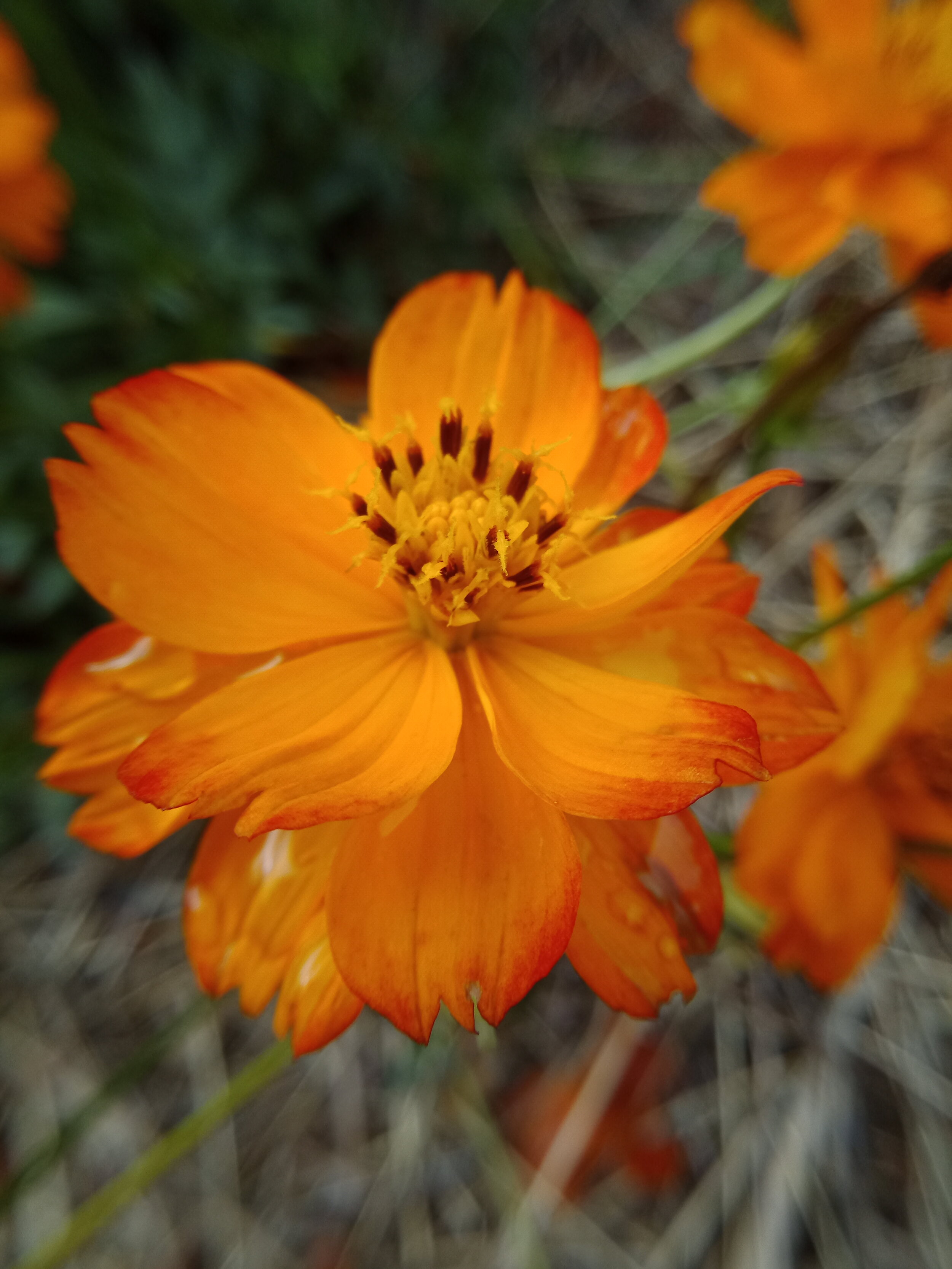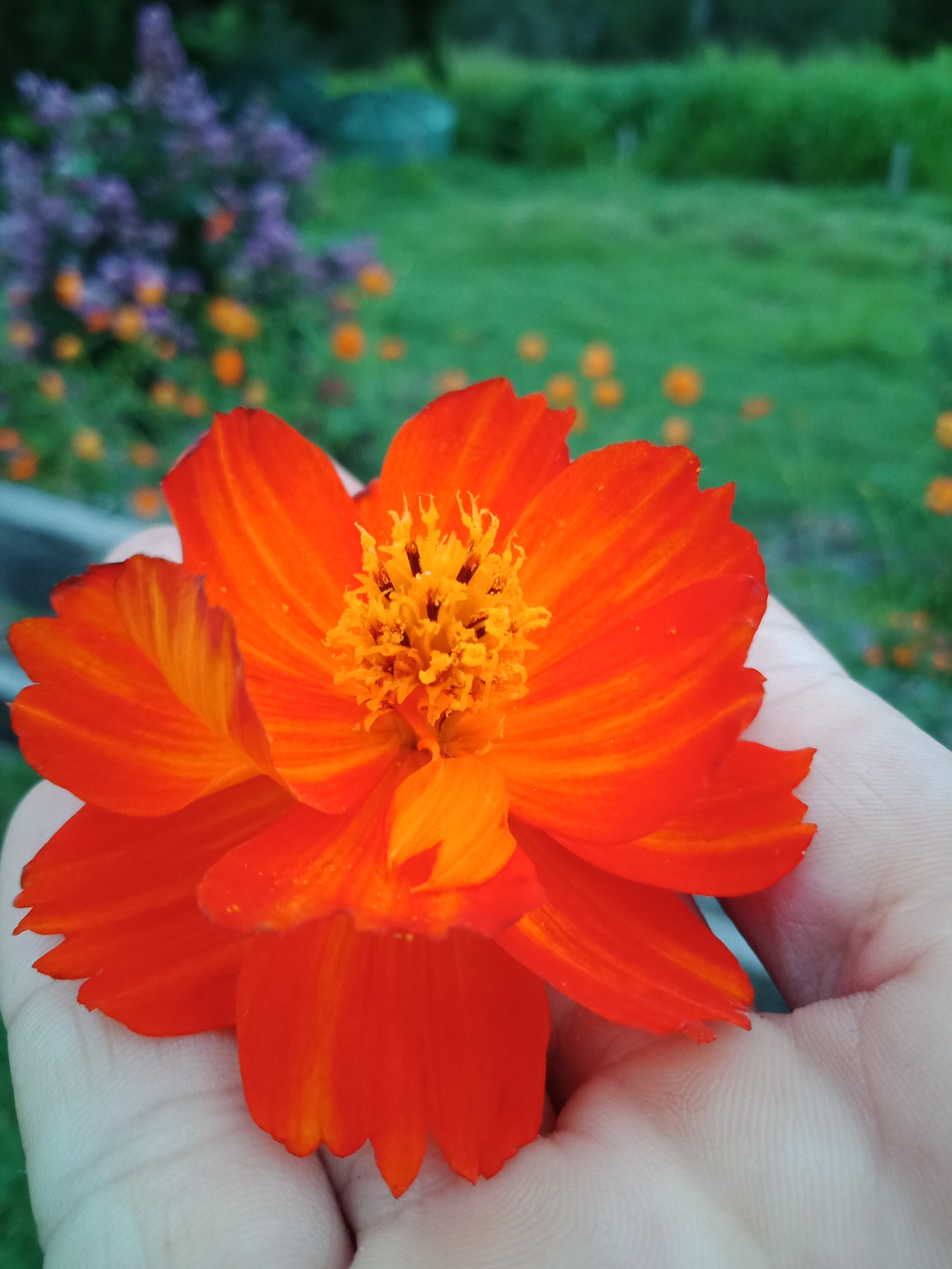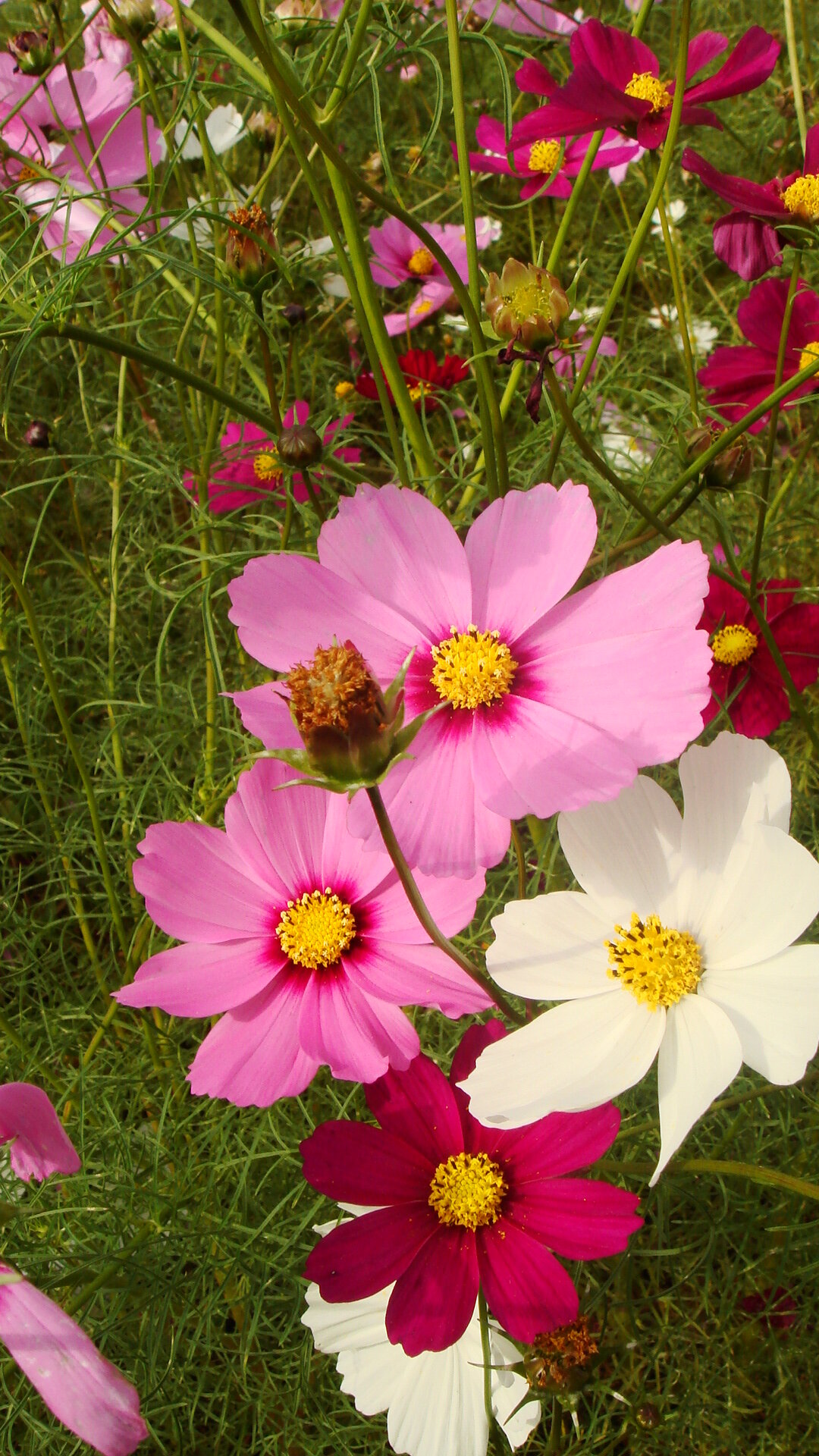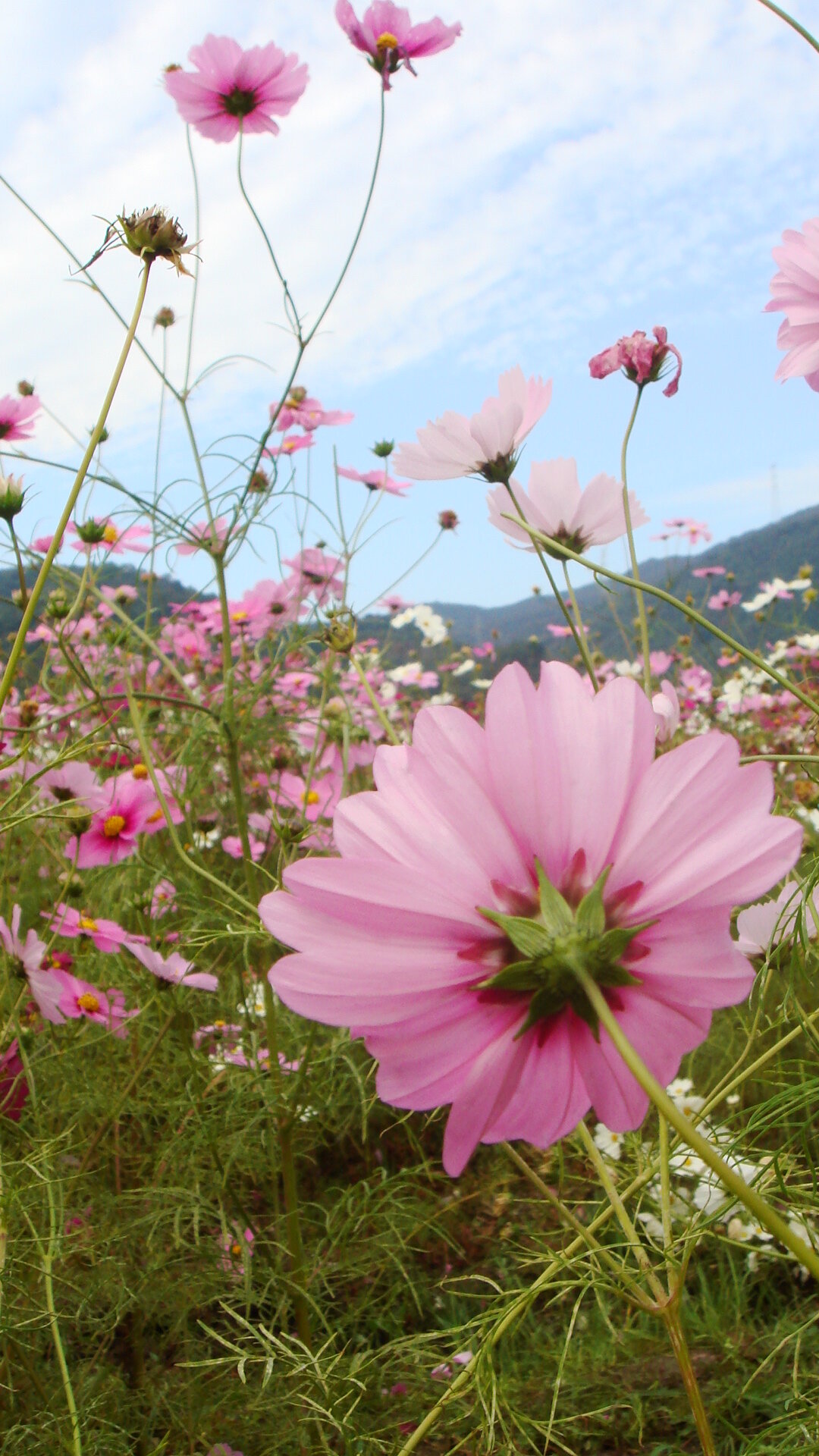Cosmos
My first encounter of Cosmos was in 2007 when I lived in Japan. My amazing host family took me with them on a day trip to Fukui prefecture where we stopped at a Cosmos farm. I remember an amazing sea of pale pink, deep pink and white flowers practically engulfing us. This was not only my first exposure to Cosmos, but also my first flower farm, so needless to stay it was such a wonderful introduction and a special memory to have of Cosmos. Fast forward 12 years and I discovered we had inherited some Cosmos when we purchased Arch Gully, only nothing like my previous Cosmos experience, it was Orange! And so my Cosmos education continued…
Varieties
Cosmos is native to Mexico, Guatemala and Costa Rica but many cultivars have been created and introduced as a garden ornamental plant that have escaped and become naturalised and even weedy in many parts of the world.
The most commonly seen Cosmos tend to be Cosmos bipinnatus which come in pale and dark pink and white and have delicate fern-like foliage.
The orange variety is a different species in the Cosmos genus called Cosmos sulphureus which has a wide spectrum of colours from yellow to orange and even a red colour. Unlike C. bipinnatus, C. sulphureus has thicker, less fern-like leaves.
Growing Conditions and Spread
Cosmos are an annual flower that prefers warm weather, however can grow across the cooler subtropical months albeit with much lower yields. I find Cosmos to be pretty hardy overall. They’re not too picky about their growing conditions although they seem to prefer slightly nutrient poor soil to produce more flowers, as too nutrient dense soil will encourage excessive foliage. The plant will also continue flowering for longer periods if you deadhead it frequently. They do have a tendency to self seed ferociously which is another good reason to deadhead if you want them in a specific location. They seem to prefer full sun to grow but can handle part shade as well.
Usage
Cosmos can make a nice, albeit short-lived cut flower, reportedly lasting only between 4-6 days, however what it lacks in shelf life it makes up for by being a wonderful cut and come again flower as it will continue to produce more flowers the more it is cut.
As a prolific flowering plant Cosmos is a beneficial companion plant for bringing pollinators into your garden patch.
Cosmos sulphureus petals and young leaves are edible and a fantastic way of a adding some bright colour to a salad.
Some research has been undertaken into health benefits of C. bipinnatus and C. sulphureus. Some of the results suggested that the flowers of C. bipinnatus have significant antioxidant activity and protective effect against oxidative DNA damage¹ (keep in mind that C. bipinnatus is frequently classed as a non-toxic but inedible plant). Another study found C. sulphureus inhibited the activity of pancreatic lipase (which can decrease gastrointestinal fat absorption)². Furthermore research has also been conducted into the hepatoprotective (liver protecting) capabilities of both C. bipinnatus and C. sulphureus due to presence of certain quercetin and phenolic compounds³.
Further Reading
¹ https://link.springer.com/article/10.1007/s11130-008-0086-8
² https://www.sciencedirect.com/science/article/abs/pii/S0963996911003796
³ https://www.tandfonline.com/doi/abs/10.1080/14786419.2017.1413557
https://www.diggers.com.au/garden-advice/articles-and-more/articles/ornamental-gardening/cosmos/





